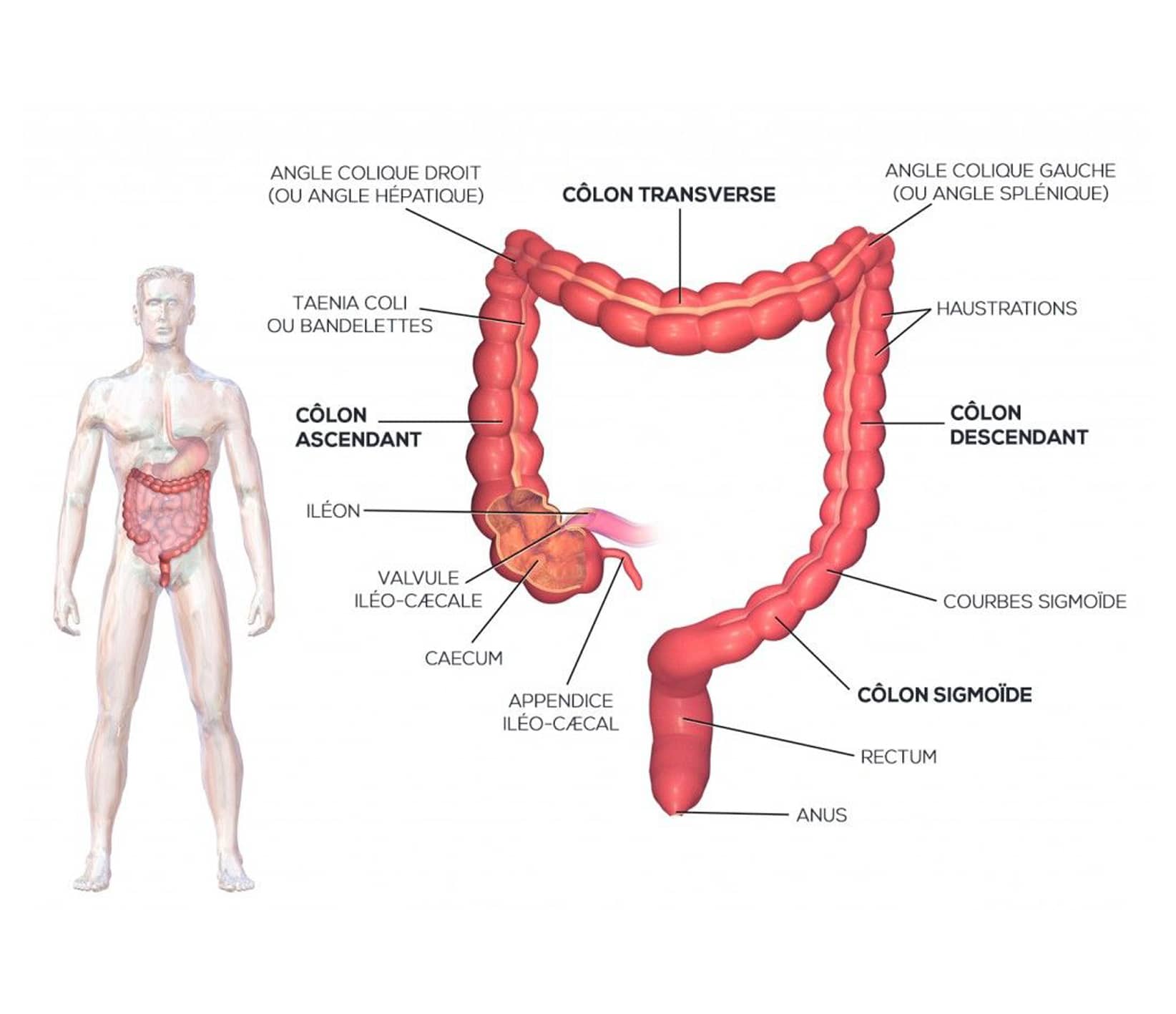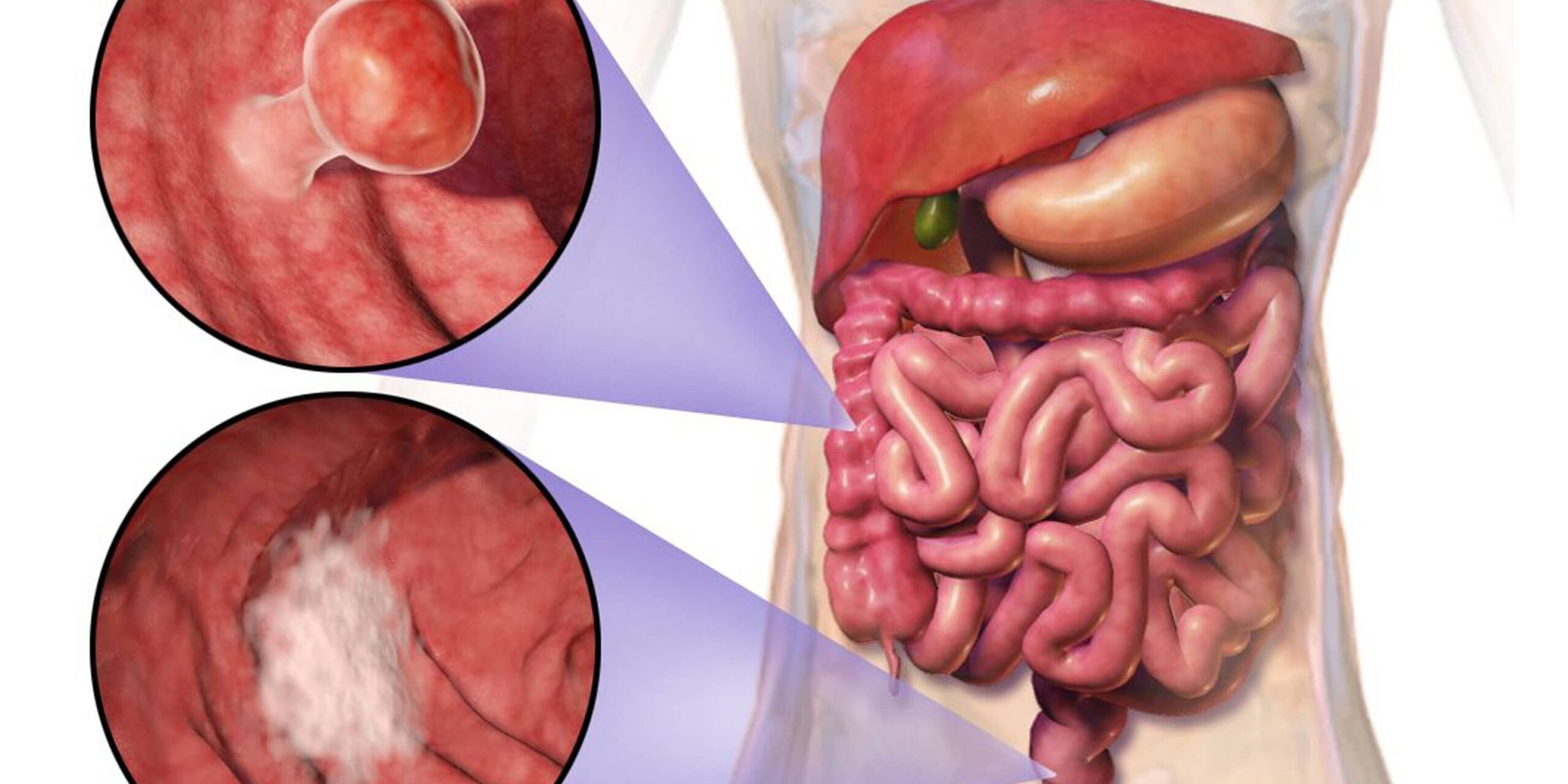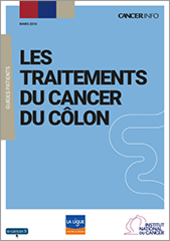Hepatobiliary and Pancreatic Unit

Colon Anatomy
The colon is part of the digestive system, it is the segment of the large intestine located between the cecum and the rectum in mammals. In humans, it measures approximately 1.5 meters and 4 to 8 centimeters in diameter.
The colon is also called the large intestine, it follows the small intestine and constitutes the last part of the digestive tract. Its role is mainly to store waste, recover water, maintain water balance and absorb certain vitamins such as vitamin K.
Chyle is the liquid content of the intestine, it is made up of digested food. When it reaches the colon around 90% of the nutrients are already absorbed by the body, then the chyle mixes with mucus and bacteria (intestinal flora) and then becomes feces.
Colorectal carcinoma
Colorectal carcinoma, or colon cancer, is the third malignant cancer in men, after lung and prostate cancer, and the second in women after breast cancer.
This type of cancer has a very high incidence rate in France: every day 100 people learn that they have it. Women are affected by this cancer as much as men. Colorectal carcinoma is curable in 9 out of 10 cases if detected early.
It is a cancer that particularly affects industrialized countries. Age, diet, heredity and lifestyle habits play a key role in its appearance. Furthermore, the presence of colorectal polyps constitutes a danger.
Polyps are benign growths that appear inside the colon; in some cases they can mutate and turn into malignant tumors.
The year 2015 was marked by real progress in colorectal cancer screening. A new screening test is offered to people aged 50 to 74, remember that this test is completely free in France.
For more information on colorectal cancer screening:
www.ameli-sante.fr

Example of location and appearance of two colorectal tumors, Wikimedia Commons
Risk factors
Although the risk factors for colorectal cancer are still poorly understood, we can distinguish situations or substances that increase the risk:
- age – this cancer is quite rare before the age of 50, it is more common around the age of 65
- lifestyle
- food
- smoking
- sedentary lifestyle and being overweight or obese
- the presence of polyps
- family and personal history
- Lynch syndrome
- chronic inflammatory diseases
- exposure to pollutants and chemicals
Symptoms
Colorectal cancer often develops silently, without causing any particular symptoms. From the age of 50, it is strongly recommended to follow a screening program.
Some symptoms may manifest as:
- recent onset abdominal pain,
- intestinal transit disorders – alternating constipation-diarrhea,
- bleeding in the stools – if blood is digested in the colon, the stools may be black in color,
- if the bleeding is not visible to the naked eye it can be detected by a test,
- a change in general condition – anemia, fatigue, weight loss, paler complexion, unexplained weight loss, vomiting.
Diagnosis and management
Colorectal cancer can be diagnosed during a screening test (from the age of 50, every year or every 2 years), this early detection greatly improves the vital prognosis.
Several tools are available to the practitioner in the event of symptoms:
- clinical examination with a rectal examination,
- colonoscopy is the reference examination,
- radiology
- colonoscopy.
The majority of colorectal tumors are located at the start of the colon (around 70%) and the others in the rectum (around 30%).
Cancer symptoms are related to the growth of the tumor in the digestive tract and adjacent organs. Approximately 25% of patients present with liver metastases at diagnosis and 50% of patients with colorectal cancer will develop liver metastases.
When cancer is detected at an early stage, it is approximately 90% curable. If the cancer is discovered late, the chances of recovery are lower. The main treatment is surgery: it allows the tumor and surrounding lymph nodes to be resected. For some cases, the tumor can sometimes be removed endoscopically.
For patients with colorectal cancer and liver metastases, treatment is decided during a multidisciplinary consultation meeting (RCP) which takes place once a week at the NHC. We can associate preoperative treatment with neoadjuvant radio-chemotherapy, then depending on the result, surgery will be proposed. Hepatectomies can be performed by laparotomy, laparoscopy and robotics, the choice of technique will be linked to the best therapeutic strategy for the patient.
Treatment – Post-operative follow-up
The cases of affected patients are discussed during multidisciplinary consultation meetings which take place once a week at the NHC in Strasbourg (New Civil Hospital). These meetings aim to establish the best therapeutic protocol for patients treated for cancer. This means that the patient’s treatment is not decided by a single doctor, but by a team of several multidisciplinary doctors.
Useful information
Guide to download: Treatments for Colorectal cancer
by the National Cancer Institute, e-cancer.fr
Cancer Info Line
Support throughout your care pathway
Quality patient care is an essential objective, and the patient is at the heart of our concerns.


